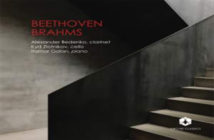
This page is also available in / Cette page est également disponible en:
![]() Francais (French)
Francais (French)
Engineered in 1994 by the Swedish telecommunications company Ericsson, Bluetooth technology is rapidly gaining ground in the computer and cellular sector. Designed as a wireless data protocol, this technology makes it possible to establish short-distance connections between various electronic devices, eliminating the need to use cables. Perhaps the system’s most common application is to link cell phone accessories. Over the years Bluetooth has established itself as a leading technology, and it is now making its gradual appearance in the audio equipment market.
Early audio applications
Launched in 2002, the Plantronics M1000 headset was one of the first devices to exploit the audio capabilities of the Bluetooth system. At this stage the sound quality remained relatively poor, due to low bandwidth. Indeed, the first version of Bluetooth technology had a data transmission speed of only 1 MB/s, giving these devices an audio quality little better than that of a regular phone.
It was not until the launch of the fourth version of Bluetooth in 2010 that wireless audio devices could reproduce sound quality comparable to that of a CD (16-bit/44.1 kHz). This release marked an important milestone in the history of wireless audio, as it finally gave audio equipment manufacturers the ability to offer wireless solutions that were close to existing audio standards.
Currently, the audio market is flooded with products using Bluetooth technology. These include headphones, portable speakers, fixed speakers, and even full sound chains. Although many manufacturers insist on the audio quality of their products, they are nonetheless subject to the technological constraints of a system that employs sound compression as an operating principle. Indeed, as the bandwidth of Bluetooth devices is too weak to transmit the entirety of a high-quality audio signal, they are forced to compress the sound by means of different codecs.
Audio quality
The SBC standard (“low-complexity subband codec”) is the default transmission standard for all Bluetooth devices. It allows data transmission from 128 KB to 345 KB per second, depending on the quality of the radio link, affording a sound similar to that of a medium-quality MP3.
Moving up a step we have the aptX codec, which remains very common in Bluetooth audio products. Like SBC, the aptX is a so-called “deteriorating” compression codec, since it degrades the starting signal to reduce its size. However, it offers better quality than the SBC standard, nearing the quality of a regular CD.
To achieve truly superior audio quality, it is necessary to turn to codecs that permit suitably high transmission speeds. Possibly there is only one, the LDAC codec developed by Sony, which can reach a speed of 990 KB/s, thus restoring an audio signal of 16-bit/44.1 kHz in its entirety. It can even reproduce 24-bit/96 kHz quality sound, albeit with low signal degradation.
That said, a good compression codec is not in itself a guarantee of good audio quality. To take full advantage of such codecs, the devices must be compatible with one another. For example, a cellular phone that supports the aptX codec must be used with a compatible audio system, otherwise the devices automatically fall back to the default SBC standard. The quality also depends on the type of file to be transmitted. If the original audio file has already been compressed using a degrading codec, the audio quality must suffer, since it has to be compressed a second time as the signal is transmitted to the device.
Bluetooth 5
Announced in June 2016, the fifth iteration of the Bluetooth system offers interesting perspectives for the audio industry. If one of the important issues with Bluetooth is its energy consumption, the latest version extends the battery life of audio devices with a “Bluetooth Low Energy” technology. But it is mainly in terms of data transmission that Bluetooth 5 offers major innovation. Whereas communication between devices was previously limited to “point-to-point” (device-to-device) interactions, the Mesh and Broadcast features now offer the ability to link multiple devices together. As a result, it has become possible to create true Bluetooth wireless networks.
This novelty is particularly interesting to manufacturers of wireless audio equipment, who are now able to use Bluetooth technology to create sound chains of multiple speakers communicating with each other. Although systems of this type already exist, most of them operate on a WiFi network that does not offer the longevity and ease of use that a Bluetooth network enables. Button-type wireless headphones will certainly benefit from these new features. Whereas point-to-point transmission could only carry audio data to a single listener who then had to relay the signal to a second one, Bluetooth-enabled devices are now able to connect both sets of headphones simultaneously. This results in an improved stability of transmission for both connections.
In conclusion, Bluetooth audio devices remain a practical solution for transmitting audio data and delivering satisfactory performance and sound quality. Until recently, however, the technical constraints of Bluetooth did not allow wireless audio devices to reproduce sound at a quality comparable to that of high-fidelity equipment. That, it seems, is about to change. www.bluetooth.com
Translated by Adrian Rodriguez
This page is also available in / Cette page est également disponible en:
![]() Francais (French)
Francais (French)














